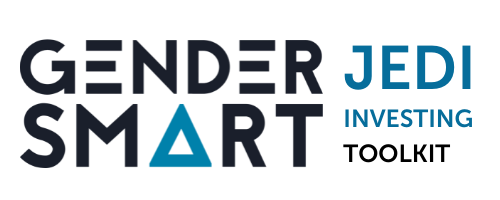The Restorative Investing Task Force
The goal of the Restorative Investing Task Force is to create a library of restorative / non-extractive case examples and to fund BIPOC Intermediaries, Funds and Entrepreneurs using restorative investing practices. This is meant to be a starting point for gathering and sharing information. We invite you to share this information with others and share your resources and restorative investing examples with us to include in this webpage.
Here’s how organizations can put intersectionality to work
Article about building intersectionality into recruitment strategies, making sure people have opportunities to discuss these issues, and an open and empathic style of leadership.
How to reduce bias in your workplace | The Way We Work, a TED series
3 ways to reduce bias at work, according to Just Work co-founders, author Kim Scott and CEO Trier Bryant. (Video)
Measuring DEI in a corp context
From BCG: The Diversity and Inclusion Assessment for Leadership (DIAL) tool analyses diversity and inclusion benchmarking data within and across industries and geographies and cuts across recruitment, retention, advancement, representation and pay
Investing for Today, Tomorrow, and Future Generations: A Guide for Indigenous Investors
The purpose of this guide is to help Indigenous institutional investors identify steps that they can take to ensure that the assets entrusted to their care are invested in ways that support their communities today, tomorrow, and for future generations.
Guide for General Counsels: Insights into Ethnicity Pay Gap Reporting
Aimed at General Counsels who advise Boards on a regular basis, this guide looks at the legal considerations behind ethnicity pay gap reporting, in particular the data protection and employment concerns, that can become a perceived barrier to publishing these statistics.
Decolonising Wealth Toolkit
Decolonizing Wealth introduces Seven Steps to Healing, which include (1) grieve, (2) apologize, (3) listen, (4) relate, (5) represent, (6) invest, and (7) repair. These steps are a means to both heal, and translate this healing into action. We as humans have given money its value of exchange, so we also have the power to change how we utilize it.
Resources: Allocating Budget, People and Time
From Inclusion in Tech: There is no ‘one-size fits all’ solution, but don’t worry! There will be resource requirements and business impact on the company when you launch your strategy. By identifying who and what will be required from the start, you can plan for any additional resources, reduce risk and create tangible timelines.
Decolonizing Diversity, Equity, and Inclusion: …Means Naming White Supremacy Culture
Traverses the role of organisational culture and shifts needed to dismantle patriarchal and white supremacist culture and organisational behaviours.
The Bias of ‘Professionalism’ Standards
Professionalism has become coded language for white favoritism in workplace practices that more often than not privilege the values of white and Western employees and leave behind people of color.
Building a Culture of Accountability
Advancing racial equity within your organization requires making accountability a cultural norm.
Being Antiracist
To create an equal society, we must commit to making unbiased choices and being antiracist in all aspects of our lives.
Is unconscious bias training still worthwhile?
Training can raise people’s awareness of their unconscious biases, but evidence shows that training alone is not effective in changing behaviour. The UK government has already decided to discontinue this kind of programme in its various departments. Frederick Herbert writes that while it is generally accepted that awareness is not a sufficient condition for behavioural change, it is usually necessary. He argues that unconscious bias training can be re-thought of as a foundation upon which other interventions can build.
Minimizing and addressing implicit bias in the workplace
By Shamika Dalton and Michele Villagran: Awareness of our implicit biases, and how they can affect our colleagues and work environment, is critical to promoting an inclusive work environment. Part one of this two-part article series will focus on implicit bias: what is implicit bias, how these biases affect the work environment, and best practices for reducing these biases within recruitment, hiring, and retention in the library workplace.
Breaking barriers: Unconscious gender bias in the workplace
This research note provides a review of unconscious gender bias and its role in impeding women’s career advancement before discussing how to mitigate and overcome unconscious gender bias in the workplace.
Intersectionality in Organizations: Why ‘Bringing Your Whole Self to Work’ is Not Sufficient
Today’s context, a historical understanding, and examples from the real world all have a role to play in understanding how to meaningfully prioritize people with multiple identities.
Embedding Racial Equity Commitments in Organizational DNA
Mission Investors curates a growing list of strategies by foundations and impact investors to embed racial equity into organizational DNA.
Project Implicit
Non-profit organization and international, collaborative network of researchers investigating implicit social cognition, or thoughts and feelings that are largely outside of conscious awareness and control.
7 ways companies are advancing racial justice in business
Over the past year, the pressure for companies to act on racial equality has increased. In response, they have started to focus on seven key actions to increase diversity, equity and inclusion (DE&I). These include hiring for DE&I roles and providing anti-bias trainings.
Grant Making with a Racial Equity Lens
A comprehensive guide from GrantCraft that considers how a racial equity lens looks within grant making organisations and how to apply these skills and strategies.

